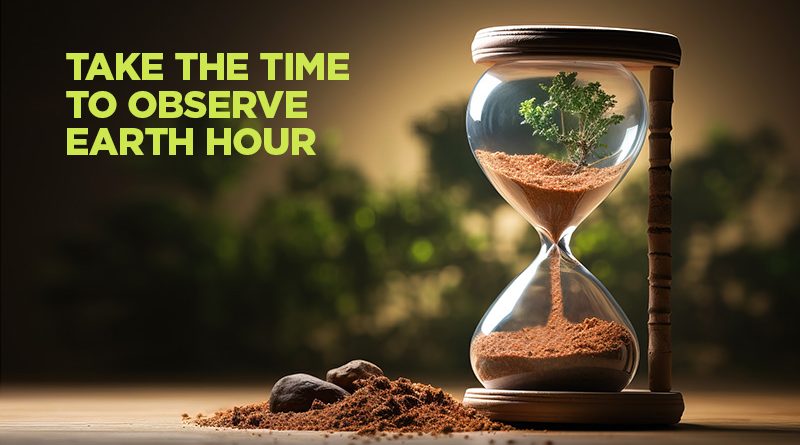Earth Hour Is Here! How Are You Going to Spend It?
Over the recent weekend, folks all over the globe celebrated Earth Hour. Who the what, you ask? Earth Hour: it’s a global effort. It’s dedicated to bringing awareness regarding climate change and environmental issues. 2024 marks the 18th year we’ve celebrated our planet in this way. According to EarthHour.org, supporters from more than 180 countries and territories collectively contributed over 1.4 million hours, making this year’s Earth Hour the biggest hour for Earth yet, with many more hours to follow as celebrations are still happening in many places.”
Now, don’t worry, you haven’t missed your chance to celebrate. In fact, you have until the end of March to either celebrate independently or make it a community event. GrantWatch shares in the recognition of Earth Hour. Indeed, we’re providing tons of grant opportunities specifically to help improve the environment and address climate change. In fact, GrantWatch offers a list of over 1,400 grants in its Environment and Conservation grants listing category.
A Breakdown, with Much Thanks to WWF and EarthHour
- What is Earth Hour? Organized by WWF, brings people together worldwide to tackle environmental issues and safeguard the planet. It all began in 2007 with a lights out event in Sydney, Australia. Since then, it’s gained support in over 185 countries. In fact, it inspires individuals and groups globally to take action for the environment. Earth Hour has even influenced significant laws by rallying people power.
- When is Earth Hour? Although Earth Hour initiatives happen all year, the main lights out event occurs toward the end of March. It urges communities and businesses to switch off unnecessary lights for an hour to show their dedication to the planet.
- Is it a Yearly Thing? The short answer is no. It’s not just an annual event. Rather, it’s a movement reaching its peak with the global lights-out hour in March each year.
- What’s Our Mission? The primary step is to turn off lights during Earth Hour. But it’s more than that. People need to take ongoing action. Let switching off lights be the start of your journey toward a brighter future for our planet.
- Why in Late March? The end of March falls very close to the Spring and Autumn equinoxes in the northern and southern hemispheres. This means that sunset times are nearly the same in both hemispheres. It’s perfect for a global ‘lights out’ event with a powerful visual impact.
Final Thoughts
Finally, this leaves one last question. What is WWF’s message to the thousands of gatherings planned for Earth Hour? “Whichever way you, your family or your friends choose to participate in Earth Hour this year, your collective voices are vitally important. Together, we must secure a New Deal for Nature and People to protect and restore nature for people and the planet.“
In closing, below are grants currently available that address environmental and conservation-related grant funding needs.
Environment and Conservation Grants and Awards
- To begin, grants up to $1,500 to nonprofit and for-profit organizations for projects that promote environmental stewardship and community building.
- In addition, grants up to $4,000 to established eligible environmental organizations. Funding is for projects and activities that contribute to environmentally sustainable communities. Grants are for community groups who are not receiving other funding.
- There is also funding for government agencies and tribes for environmental projects and outreach efforts that benefit vulnerable populations.
- Next, an award of $1,500 to a K-12 teacher to recognize accomplishments in incorporating agricultural education into their classroom. Qualifying teachers use agricultural information or materials to assist students in the learning process.
- Finally, grants up to $10,000 and $15,000, and in-kind donations of solar energy products to nonprofit organizations. Funding enhances the quality of life in local communities.
Additional Environment and Conservation Grants
- To continue, awards to individuals and groups to recognize outstanding work in environmental education. Eligible nominees include formal and non-formal educators, individuals who have demonstrated a strong commitment to environmental education.
- Awards to for-profit businesses to recognize innovation, sustainable practices, and community service. In addition, awardees will receive a cash prize, recognition, and will have the opportunity to participate in a business accelerator.
- In-kind donations of plants and classroom resources to PreK-12 teachers to establish school gardens. Funding educates students through outdoor learning, heighten their appreciation of plants and animals, and promote the use of school gardens.
- Grants to nonprofits, government agencies, and tribal governments for projects that improve conservation practices. Eligible projects may address wildlife and fish habitat conservation and conservation of natural areas. In addition, access to private and public lands for sportsmen, water quality, soil conditions, plant diversity, animal systems, and more.
- To conclude, grants to government agencies and nonprofit organizations to conserve forestlands. What’s more, funding is for property acquisitions and activities to restore and improve forestland habitats.
We hope you’ll join in the Earth Hour observance. Be part of this worldwide effort!
About GrantWatch
So, with close to 8,000 grants currently available, GrantWatch.com is the leading grant listing directory. Upgrade to a MemberPlus+ subscription to view the full grant details, including eligibility criteria and application information. And, for more information, you can also visit the GrantWatch FAQ page. Finally, to see the great value of all 20 of the top GrantWatch features, click here.

